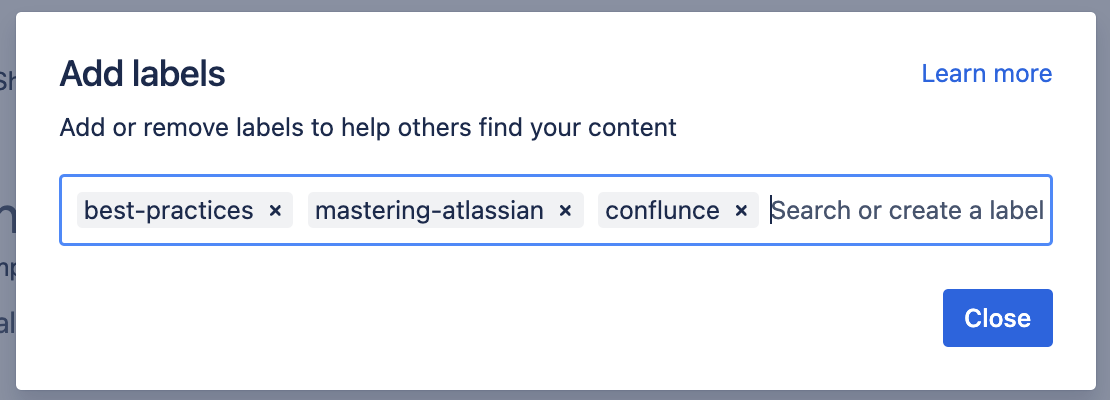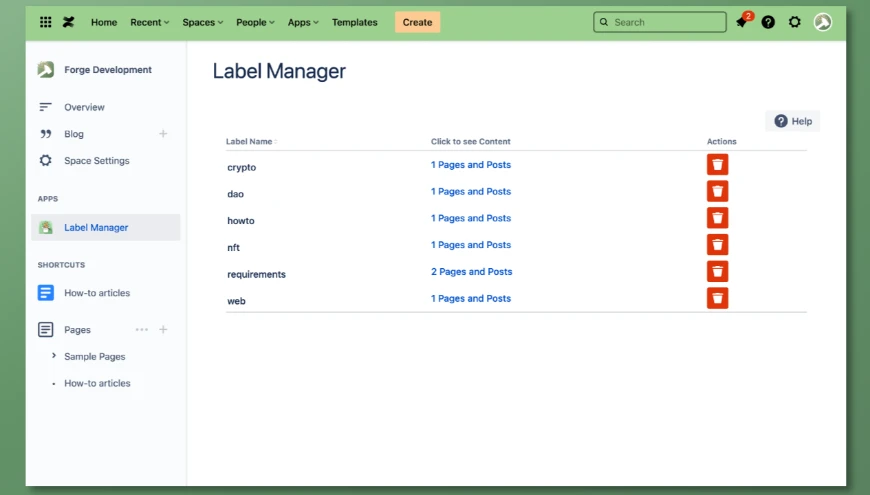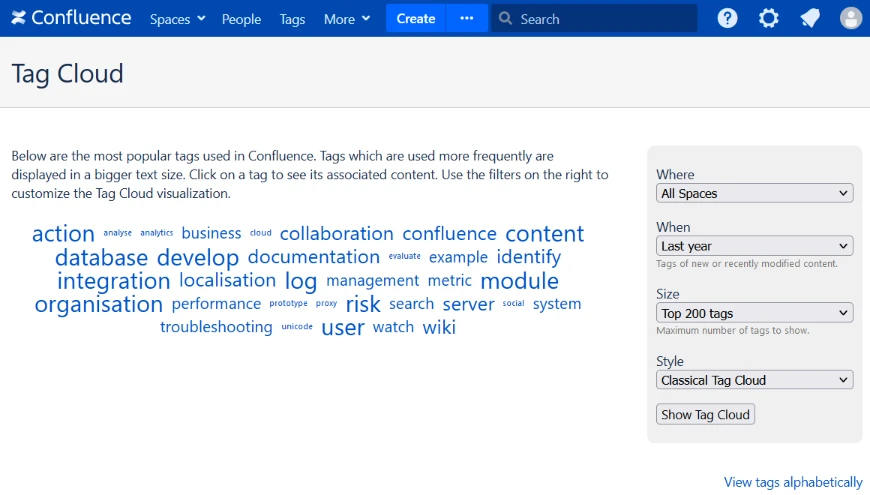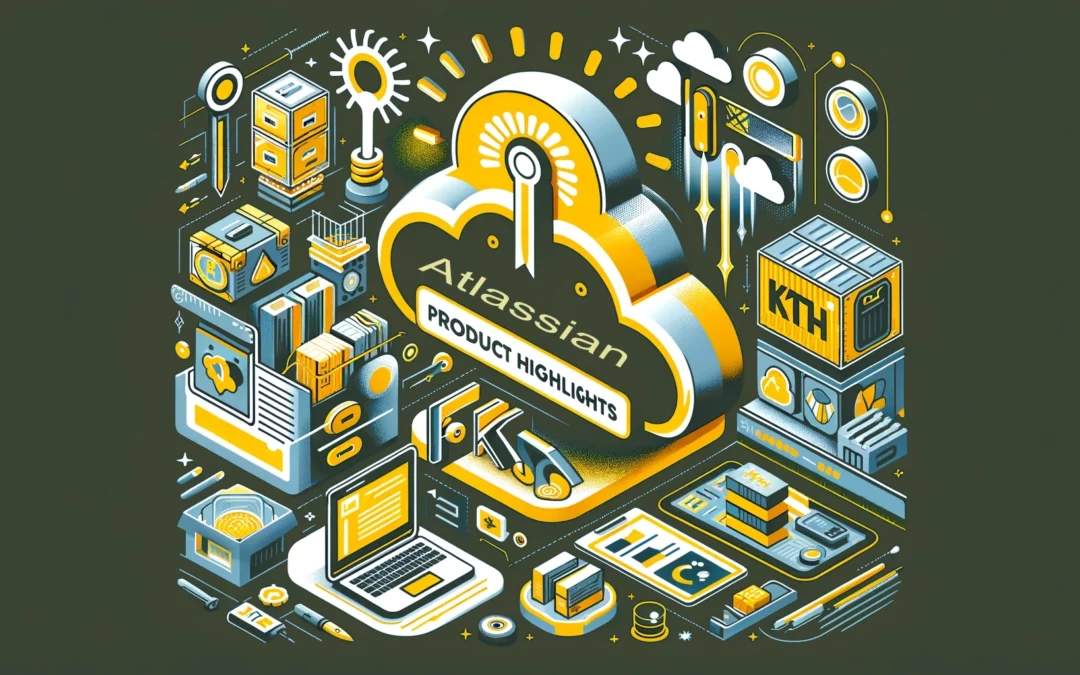How Labels in Confluence Help Teams Stay Organized and Efficient
Confluence has established itself as a go-to platform for teams to create, share, and manage their content effectively. Whether it’s project documentation, meeting notes, or knowledge sharing, Confluence serves as a versatile tool for team collaboration.
One of its key features that significantly enhances organization and information retrieval is the use of labels. In this blog post, we’ll dive deep into why and how labels help teams stay organized in Confluence, providing examples, best practices, and highlighting of this feature.
The Power of Labels
Labels are like digital sticky notes that you can attach to your Confluence pages, blog posts, and attachments. They are simple keywords or phrases that describe the content’s topic, purpose, or any other relevant attributes.

Key Features:
Streamlined Content Discovery
Imagine your Confluence space as a vast library with thousands of pages and documents. Without labels, finding the right information can be akin to searching for a needle in a haystack. Labels, however, act as index markers, making it easier for team members to discover the content they need.
Example: In a project space, you can label pages with project names, deadlines, or the team responsible. When a team member needs to find the latest project updates, they can simply click on the relevant labels to quickly access the pertinent information.
Enhanced Categorization
Labels allow you to categorize your content in a flexible and customizable way. You can create labels for different projects, departments, content types, or any criteria that make sense for your team. This categorization helps in maintaining a structured and well-organized knowledge base.
Example: In a company’s Confluence space, you can use labels like “Marketing,” “Sales,” “HR,” or “Product Development” to classify content based on the department it belongs to. This makes it easy for teams within each department to find what they need.
Cross-Functional Collaboration
Labels promote cross-functional collaboration by breaking down silos and enabling teams to share information seamlessly. When you label your content, it becomes discoverable not only within your team but also across the entire Confluence instance.
Example: If the marketing team labels their content with “Market Research,” the product development team can easily access this valuable information when working on new features or products.

Best Practices with Labels
Standardize Labeling:
Consistency is key when it comes to labeling in Confluence. Standardizing your labeling practices ensures that everyone in your team or organization understands how to use labels effectively. Here’s how to do it:
- Create Labeling Guidelines: Develop clear and concise guidelines that outline when and how labels should be used. Provide examples and instructions for common labeling scenarios.
- Define Label Categories: Consider defining categories for labels to maintain consistency. For example, you can have labels for topics, projects, content types, or departments. These categories help users understand the purpose of each label.
- Use Naming Conventions: Establish naming conventions for labels to ensure that they are easily understandable. For instance, if you’re labeling projects, you could use a format like “Project_Name” to make it clear.
Prioritize Relevance:
The goal of labeling is to enhance content discoverability, so it’s essential to use labels that are relevant to the content. Avoid adding labels just for the sake of it. Here’s how to prioritize relevance:
- Label with Purpose: Each label should serve a specific purpose. Ask yourself how a label contributes to the categorization and retrieval of content before applying it.
- Keep It Simple: Use clear and straightforward labels that directly relate to the content. Ambiguous or overly complex labels can confuse users.
- Remove Redundant Labels: Periodically review your labels and remove any duplicates or labels that are no longer relevant to your content.
Use Labels Sparingly:
While labels are a powerful organization tool, it’s important not to go overboard. Using too many labels can clutter your interface and make it challenging for users to navigate. Here’s how to use labels sparingly:
- Focus on Key Attributes: Identify the most critical attributes or categories that are essential for content organization, and use labels for those. Less can be more when it comes to labels.
- Limit Label Count: Consider setting a limit on the number of labels that can be applied to a single page. This helps prevent label overload.
Combine with Page Trees:
Labels work best when used in conjunction with a well-structured page hierarchy or page trees. Combining these two elements creates a user-friendly navigation experience. Here’s how to do it:
- Create Logical Page Trees: Organize your Confluence space with a logical hierarchy of pages. Use parent pages to group related content together.
- Use Labels for Cross-Linking: Apply labels strategically to connect related content across different branches of your page tree. This helps users discover related information easily.
- Include Label Filters: Consider adding label filters to your pages or spaces to allow users to filter content based on labels, enhancing their search experience.
Review and Update Labels:
Your content and labeling needs may evolve over time. Regularly reviewing and updating labels is essential to ensure that your labeling system remains effective. Here’s how to maintain your labels:
- Scheduled Reviews: Set up a schedule for reviewing labels and their usage. This can be done monthly, quarterly, or annually, depending on your needs.
- User Feedback: Encourage users to provide feedback on labels. They may identify opportunities for improvement or suggest new labels that could be beneficial.
- Archive Outdated Labels: When labels are no longer relevant or in use, consider archiving them to declutter the labeling system.
By following these best practices, you can harness the full potential of labels in Confluence, creating an organized and efficient knowledge-sharing environment for your team or organization. Remember that labels should be a tool that simplifies content discovery and collaboration, so thoughtful and consistent use is key to their success.

Conclusion:
Labels in Confluence are a powerful tool for maintaining order and boosting productivity within your team’s collaborative workspace. When used thoughtfully and consistently, labels can transform Confluence from a chaotic digital jungle into a well-organized knowledge repository. So, embrace the power of labels, streamline your content.
If you found this useful check out this article from Atlassian too!
Thanks for visiting, click here to learn more about out our Atlassian Cloud Services!
